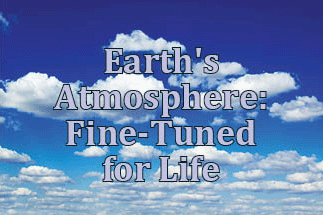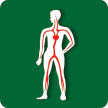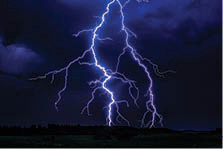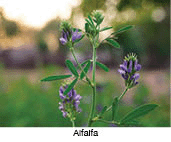Return to 1st Quarter 2022 articles.

Nitrogen and oxygen together make up about 99% of the air we breathe. The vast majority of our atmosphere is nitrogen. Oxygen is ten times as abundant as nitrogen in the universe, but it makes up only about 21% of our atmosphere. So, the less common element is the most abundant in our atmosphere. What does that mean to us? The bottom line is that the atmosphere is fine-tuned for life. Let us examine that more carefully.
An atom of oxygen and an atom of nitrogen differ by only one proton and one electron. That may not seem like much, but it makes a world of difference. Both of those elements form diatomic molecules, meaning that two atoms bond together to make one molecule of oxygen or nitrogen. Covalent bonding is the chemical bonding of atoms by equal sharing of electrons. That bond gives atoms stability in their outer, or valence, electron shells because atomic stability requires eight valence electrons. The only elements with that number are the so-called “noble gases” — helium, neon, argon, krypton, and radon. For that reason, they are inert, refusing to combine with other elements. All other elements need electrons to complete the octet in their valence shells.


An oxygen atom has six electrons in its valence shell, so it needs to share two electrons to become stable. When an oxygen atom shares two electrons with another oxygen atom, they both become stable. Nitrogen, on the other hand, has only five valence electrons. Therefore, by forming a covalent bond with another nitrogen atom, sharing three electrons, both atoms complete their valence shell. In this way, our atmosphere is made up of stable diatomic oxygen and nitrogen molecules.
However, not all molecules are equally stable. That is where we see the atmosphere is fine-tuned for life. For example, oxygen molecules have a double bond sharing two electrons, but nitrogen atoms have a triple bond sharing three electrons for more stability. That difference may seem insignificant, but it is essential to make life possible.

For oxygen or nitrogen to combine with other elements to form new compounds essential for life, the covalent bond between them must be broken. It takes about double the energy to break the triple bond between two nitrogen atoms as to break the double bond between two oxygen atoms. That means oxygen can be released to form other compounds much more easily than nitrogen.

What does it take to break the oxygen bond and combine it with another element? Apply some heat to combustible material, and you will find out. You will get fire, which is a chemical reaction involving rapid oxidation of the burning material. Much slower oxidation occurs when oxygen in your blood combines with nutrients in your body, giving you energy and generating body heat. Another slow form of oxidation is when iron combines with oxygen to form iron oxide, or rust. If it were not possible to release oxygen from its molecular bond with relative ease, we would not have combustion to heat our homes, run our vehicles, or energize our bodies. Life would not be possible.

However, nitrogen bonds are much harder to break, and nitrogen is also essential for life. As we said previously, the triple bond of a nitrogen molecule requires almost twice as much energy to break as the double bond of an oxygen molecule. However, plants need nitrogen for photosynthesis and growth. What is the solution?

One way is that lightning breaks the nitrogen bond allowing rain to wash nitrogen compounds to the ground. Another solution is plants such as beans, peas, and alfalfa, which we call legumes, have microorganisms on their roots that extract nitrogen from the air. That enriches the soil with nitrogen while providing for the legumes. A third method is that more than a century ago, scientists found a way to extract nitrogen from the air to produce ammonia. That process enabled fertilizer production, which today allows farmers to produce enough food for the world’s population.
Although it is not easy to break the nitrogen bond so it can combine with other elements, since 78% of the atmosphere is nitrogen, there is no shortage. So why is our atmosphere mostly nitrogen? Since it is only about 21% oxygen, would it not be better to have more oxygen so we could breathe easier? The answer is that nitrogen stability is essential for our safety. Wildfires have been a significant problem in recent years. If the atmosphere consisted of a very high percentage of oxygen, fires would be more common and dangerous. If the atmosphere consisted of nearly 100% oxygen, all it would take is one lightning strike to set the whole planet on fire.
Remarkably, we have the correct percentage of elements in our atmosphere. We have the right amount of oxygen to allow respiration to power our bodies and combustion to power our vehicles and industry and heat our homes. At the same time, we have the right amount of nitrogen to prevent uncontrolled combustion leading to the destruction of life. We also have just a small amount of carbon dioxide, which plants need for photosynthesis. Plants use CO2 and generate oxygen to keep the gases in balance. The balance is amazingly precise as long as humans do not generate enough carbon dioxide to mess it up.

During the dinosaur age, the oxygen level was higher, on the order of around one-third of the atmosphere. That allowed the enormous animals to prepare the Earth for humans. Now we have the precise balance to sustain human life and advanced society. The question is, did the features of oxygen and nitrogen and the balance between them happen by accident, or was it part of an intelligent plan? We think the best explanation is that an intelligent Planner of life created it.
Picture credits:
© Serg64; Image from big stock.com
Two graphics: © ollomy. Image from big stock.com
© Dasya11. Image from big stock.com
© alexmak72427. Image from big stock.com
© SciePro. Image from big stock.com
© NVS my world. Image from big stock.com
© Mindaugas Gasparavicius. Image from big stock.com
© thala bhula. Image from big stock.com
© Herschel Hoffmeyer. Image from big stock.com
